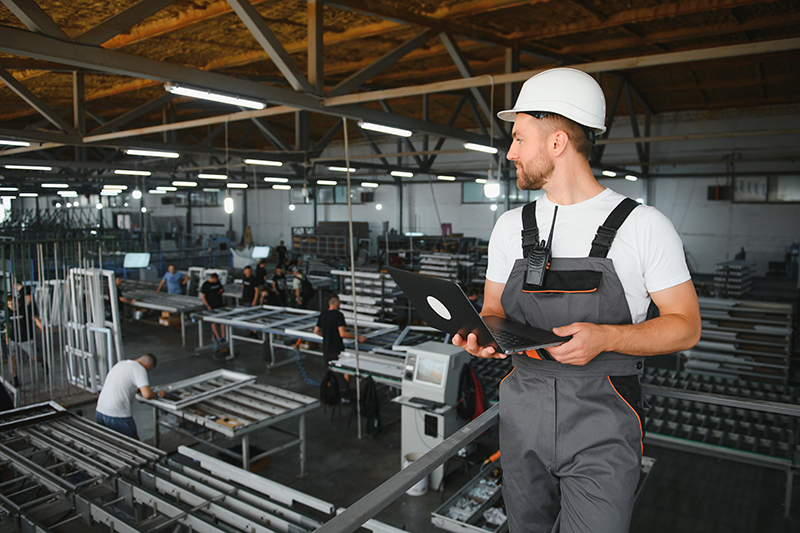August 01, 2025

High-performing manufacturers used to be distinguished by their quality, consistency, innovation, or ambition. Now, industry leaders are defined by a different trait: agility.
In just the last five years we’ve been through a global pandemic, tariffs and trade wars, the rapid emergence of AI, and significant supply chain disruptions, to name just a few examples. In the years ahead, we can expect increasing talent shortages, uncertain economic conditions, major advantages for early adopters, and increasing penalties for late movers.
In a climate where disruption is the norm and change arrives suddenly; every manufacturer must be prepared to adapt—again and again. Most manufacturers react in this situation, trying to restore the status quo after a disruption. High performers respond, turning the unexpected into opportunity.
The next surprise is already underway. This blog explains why elite manufacturers are already prepared.
Where does Agility Come From?
In manufacturing, agility combines two elements: the ability to act quickly with the means to choose wisely. Disruptive times make it difficult or impossible to anticipate tomorrow. Regardless, high performers are ready for anything because they can quickly assess any situation, adjust their strategy and operations accordingly, and implement changes effectively.
All manufacturers pivot as necessary. Those that consistently emerge stronger have three key capabilities:
- Data-Backed Decision Making: Rather than following rigid routines, sticking to past playbooks, or relying on assumptions and intuitions, agile manufacturers base decisions on data. By collecting more data from more sources into a single-source-of-truth that updates in real-time, decision-makers always have the information and evidence required to analyze the situation objectively and identify the best course forward.
- Broad and Deep Visibility: Disruptions send ripples across departments and through the supply chain, affecting operations, suppliers, and logistics at the same time but in different ways. High performers have visibility into all corners of their organization and close ties to all their partners so that nothing catches them off guard after a disruption.
- Rapid Response Times: Speed matters when things go sideways, and agile operations have the ability to reroute, replan, and reschedule on short notice. They complement that speed with the ability to quickly compare multiple options and confidently reach conclusions without getting bogged down by data collection or analysis.
Using Technology to Boost Agility
Nothing has a bigger impact on agility than technology.
It can be an asset, giving leaders the oversight and control to steer through turbulence. Or it can be an obstacle, creating confusion, inefficiency, and disorder at the worst time possible. One recent survey showed that 92% of manufacturers believe smart manufacturing will be the largest driver of competitiveness over the next three years. And while most are planning to implement new technologies, high performers have already put many of the key pieces in place.
Most important is replacing data silos with a unified source for production and inventory data. Having everything in one place makes it faster to find data and easier to conduct analysis. It also enables leadership to set up alerts to keep their focus on what matters and build detailed scenario models to evaluate competing options. Finally, a system that brings data sources together does the same for collaborators and communication channels, keeping stakeholders updated, informed, and (most importantly) aligned around the same information.
A manufacturing-specific ERP like CloudSuite Industrial combines all these capabilities into one seamless package. It transforms agility almost immediately. However, it takes more than just technology to survive disruption.
Don't Underestimate the Human Element
Technology is merely a means to an end: making difficult decisions faster, easier, and more consistently correct for the people dealing with disruptions. Digital tools can help in countless ways—but the responsibility to make the final decision ultimately falls on teams and individuals.
That’s why high-performers embrace the potential of technology but never assume it’s an out-of-the-box solution. In order for technology to pay off as planned, it needs to be closely tailored to the business and production environments. Likewise, the company and users need to adapt to what the technology can (and can’t) do.
Aligning all those pieces—technology, company, and users—does not prevent disruptions. Rather, it makes factories dynamic no matter what, when, why, or how disruption arrives at their door.
Become a High Performer
Imagine two manufacturers, both affected by a new tariff. One scrambles to understand the implications and struggles to adapt, with every pivot creating unintended consequences. The other immediately has insights and options thanks to their ERP, helping them move fast, think strategically, and seize the moment to capture market share.
Guide Technologies helps manufacturers get to the second group and remain dynamic in the face of disruption. Always be ready—contact us.
